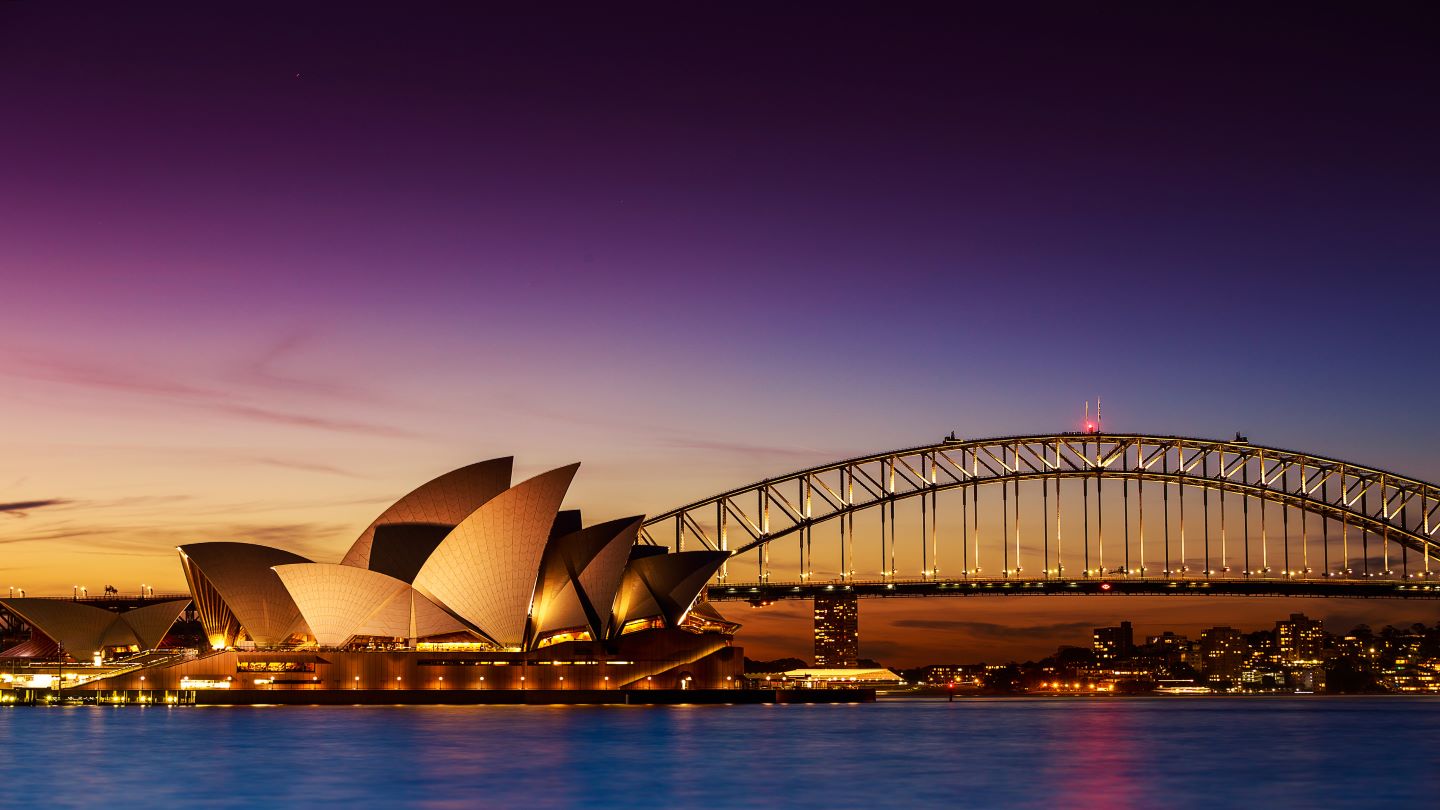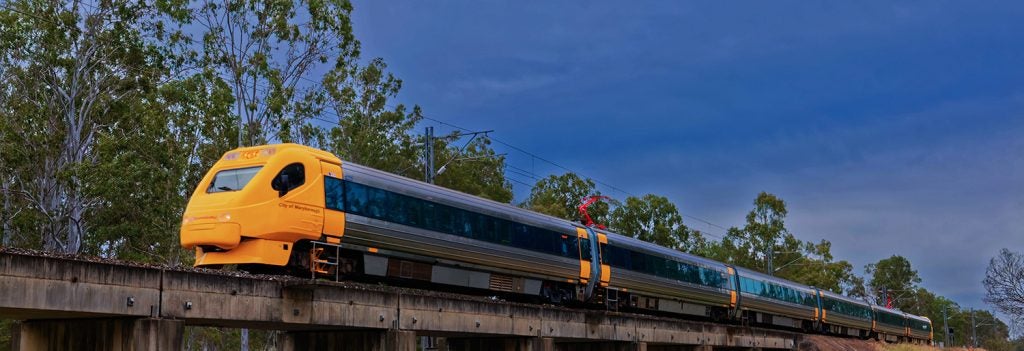
Australia has a long and complicated history with high-speed rail. Over the last 50 years, an ever-growing number of potential projects have found their way to the desks of both local and national government officials.
In the 80s there was the New South Wales XPT, based on the iconic British Rail Intercity 125, and the proposed Very Fast Train project linking Sydney, Canberra and Melbourne.
The 90s saw a brief dalliance with tilting trains – CountryLink, the predecessor to New South Wales TrainLink, trialled three SJX 2 cars for three months in 1995 – and the launch of the Alstom and Leighton Contractors joint proposal, Speedrail. The initiative was still in the planning stage when it was finally turned down in 2000.
In the 00s, in the wake of Speedrail’s termination, five more major high-speed rail proposals appeared. Four of these focused on New South Wales, the country’s most populous state and home to Australia’s largest city, Sydney.
In fact, in the last decade, New South Wales has been a major focus when it comes to high-speed rail projects in Australia – understandably, given the high population in the state. But despite countless studies, proposals have never seemed to come to fruition.
And now, it’s emerged that the latest in a long line of Australian high-speed rail plans has, again, been axed.
How well do you really know your competitors?
Access the most comprehensive Company Profiles on the market, powered by GlobalData. Save hours of research. Gain competitive edge.

Thank you!
Your download email will arrive shortly
Not ready to buy yet? Download a free sample
We are confident about the unique quality of our Company Profiles. However, we want you to make the most beneficial decision for your business, so we offer a free sample that you can download by submitting the below form
By GlobalDataHigh-speed rail plans cancelled, again
At the start of March, The Guardian reported that the Government of New South Wales has “quietly abandoned” the latest Fast Rail project in the state.
The Fast Rail project focused on four major corridors, from Sydney to Newcastle, Wollongong, Canberra, and Orange/Parkes. A newly constructed dedicated track would allow trains to reach speeds of up to 250km/h, and the services potentially would have cut travel times by 75%.
The project would have involved 50km of tunnelling, some under suburban Sydney, and would include a single tunnel measuring 30km. It would reportedly also have created a new rail bridge in the country that could have taken the title of the longest in the country.
“Fast rail has the potential to be among the most important ‘region shapers’, transforming settlement, jobs and enabling a truly polycentric city region,” the New South Wales Greater Cities Commission said in a discussion paper last year.

But, as per The Guardian’s report, project teams that had been developing the final business case for the Newcastle corridor were told in December that building a new dedicated track was no longer a consideration of the state government.
The news seemed to come out of the blue. The state government had invested A$87m in planning since 2019 and there were plans for an additional A$95m to be allocated.
The Perrottet Government is reportedly planning to shift the burden of the Fast Rail project to the commonwealth, and as such leave it in the hands of the national high-speed rail authority, citing the mounting debts the government faces to pay for its infrastructure projects.
It’s a marked U-turn from Premier Perrottet’s predecessor, Gladys Berejiklian, who during the announcement of the Fast Rail project in 2018, said: “I’m not going to wait for the other states and the Federal Government. We’ve waited too long, so New South Wales will start the process.”
Fear of commitment?
The New South Wales Government appointed Professor Andrew McNaughton as the Fast Rail Panel Chair, tasked with providing advice to the Premier and Deputy Premier on how to best deliver the fast rail network.
McNaughton boasts a wealth of experience, currently serving as Strategic Adviser of the UK’s high-speed megaproject, HS2, and was previously chief engineer at Network Rail, amongst other positions in a 45-year rail infrastructure career.
Fittingly then, one of the projects that the New South Wales Government cites on its website is HS2. The project plans to be “a catalyst for economic growth” and will facilitate “faster and easier travel” between Britain’s economic hubs.
But HS2 seems to be on a perpetual political knife-edge in the UK, with news of the project going through cuts surfacing every few months, to the point that the project is starting to look like a ghost of what could be.
“Public infrastructure projects are an investment in our future, not a cost.”
The cuts are still coming. In a written statement to Parliament on 9 March, UK Transport Secretary Mark Harper confirmed that the 60-mile section between Birmingham and Crewe will be delayed by two years, due to rising costs associated with the HS2 project.
The move was criticised as “short-termism” by industry. “Public infrastructure projects are critical for economic growth, and meeting levelling up and net-zero goals,” Jonathan Spruce, Institution of Civil Engineers Trustee for policy and external affairs told Railway Technology. “They are an investment in our future, not a cost.”
High-speed rail projects do require considerable capital investment. But the economic growth they create will usually outweigh the financial outlay in the long run; according to the American Public Transport Association, every $1 invested creates $4 in economic benefits.
To the outsider, it seems the New South Wales Government has a fear of commitment when it comes to high-speed rail, going through the courtship of research, only to get cold feet when it comes to the long-haul commitment of a large-scale infrastructure project.
A lose-lose solution?
“I don’t know where [the Fast Rail project] stands now,” McNaughton told the Sydney Morning Herald in December. “It can’t be a political football every four years. It’s got to be something that everybody says is a fundamental part of the future of the country.”
Less than half a year on, we are beginning to find out where things stand. The Perrottet Government now plans to quadruple the railway tracks at three sections of the existing line – between Tuggerah-Wyong, Hornsby-Berowra, and Epping-Hornsby.
This would, according to the government, allow express services that run between Newcastle and Sydney to run more frequently, but would not increase the speed of services.
But on the topic of upgrading the existing track, McNaughton’s stance in the same December interview was at odds with the new plans, saying that the existing track is “a lovely piece of Victorian era engineering, but it’s basically useless” as modern high-speed rail infrastructure.
“It’s a lovely piece of Victorian era engineering, but it’s basically useless.”
It’s hard to argue that the new plan isn’t a watered-down version of what the people of New South Wales expected. The frequency of trains in service may increase, which will be a stop-gap solution, but without building new modern lines, the State Government is spending money on a temporary measure. The matter is undoubtedly going to need revisiting again sooner than it would like.
If the Australian Government doesn’t pick up the tab for the full project as the Perrottet Government hopes, then New South Wales will be forced to either take full responsibility for the project, as ex-Premier Berejiklian originally implied or make the decision to cancel the project for good – and in the process, write off the money spent on feasibility studies.
As with so many infrastructure projects, inflation can be the biggest reason for ballooning budgets. Given the current global economic situation, whoever is funding the project will end up footing a bigger bill the longer it takes to move forward.
Reportedly the Government of New South Wales has not secured any of the land for the fast rail corridors identified by McNaughton. Given that, and based on the track record, it’s not unlikely that this will be the end of the line for another high-speed rail project.






